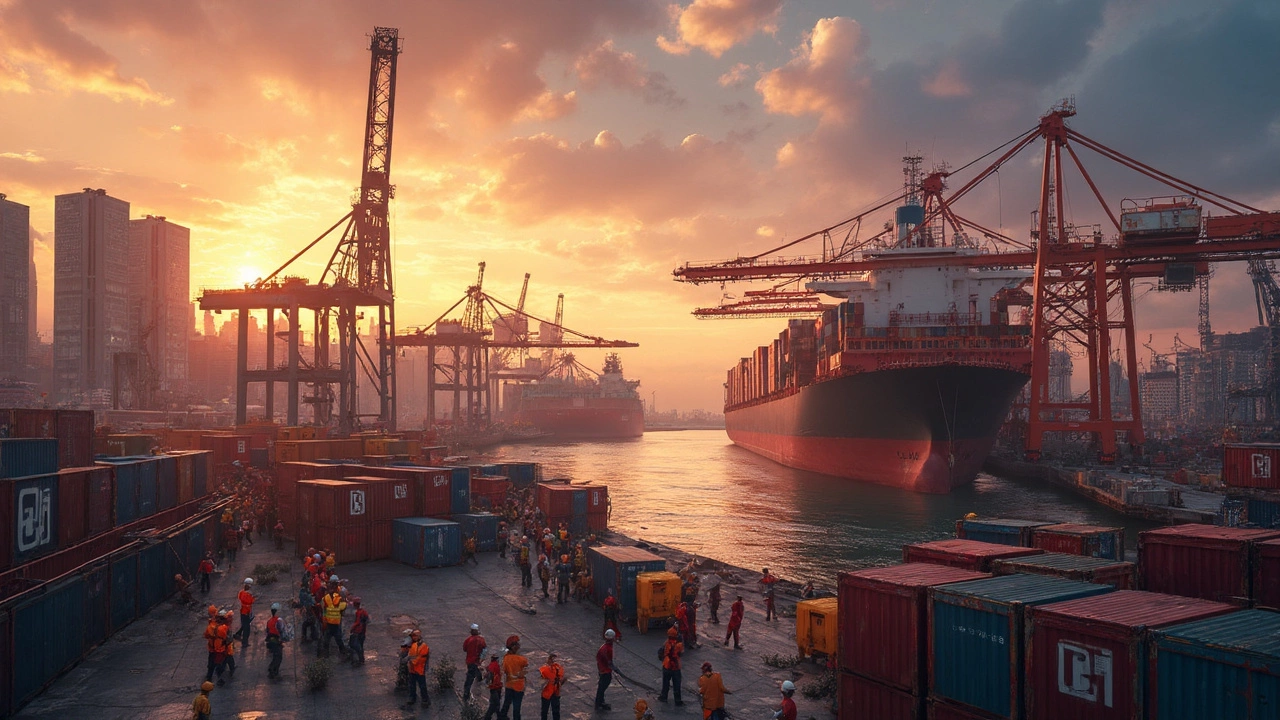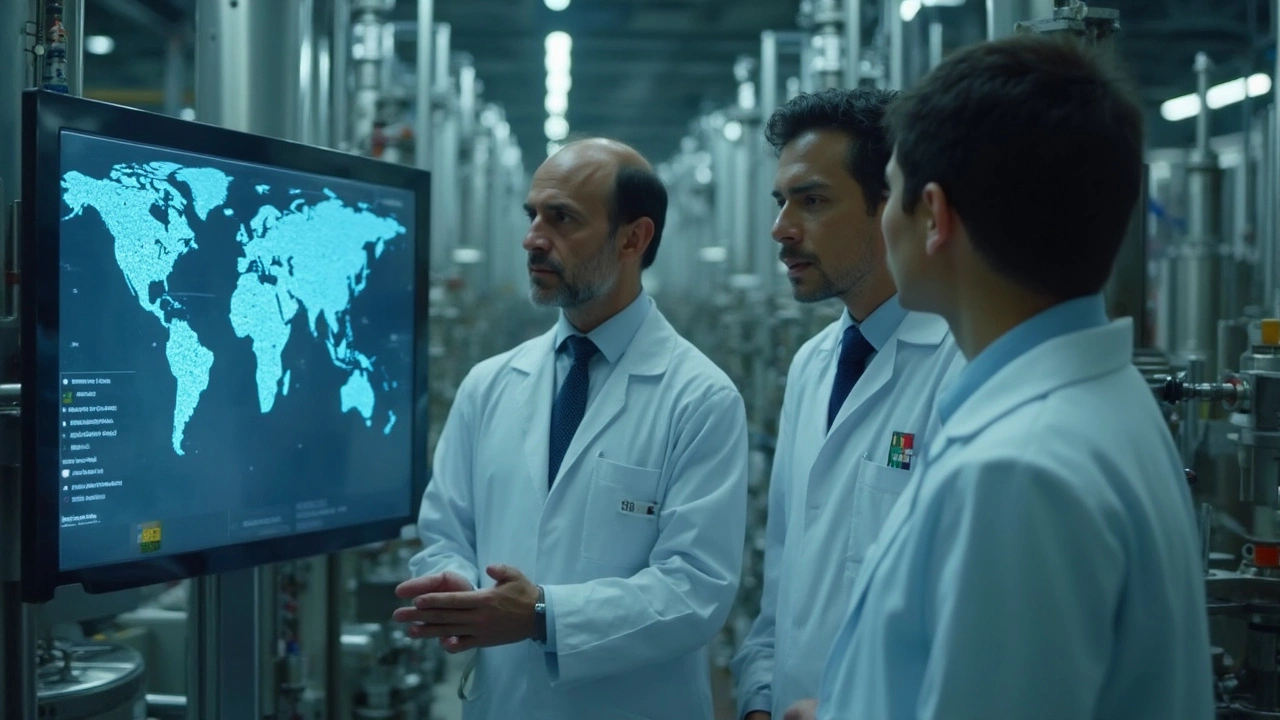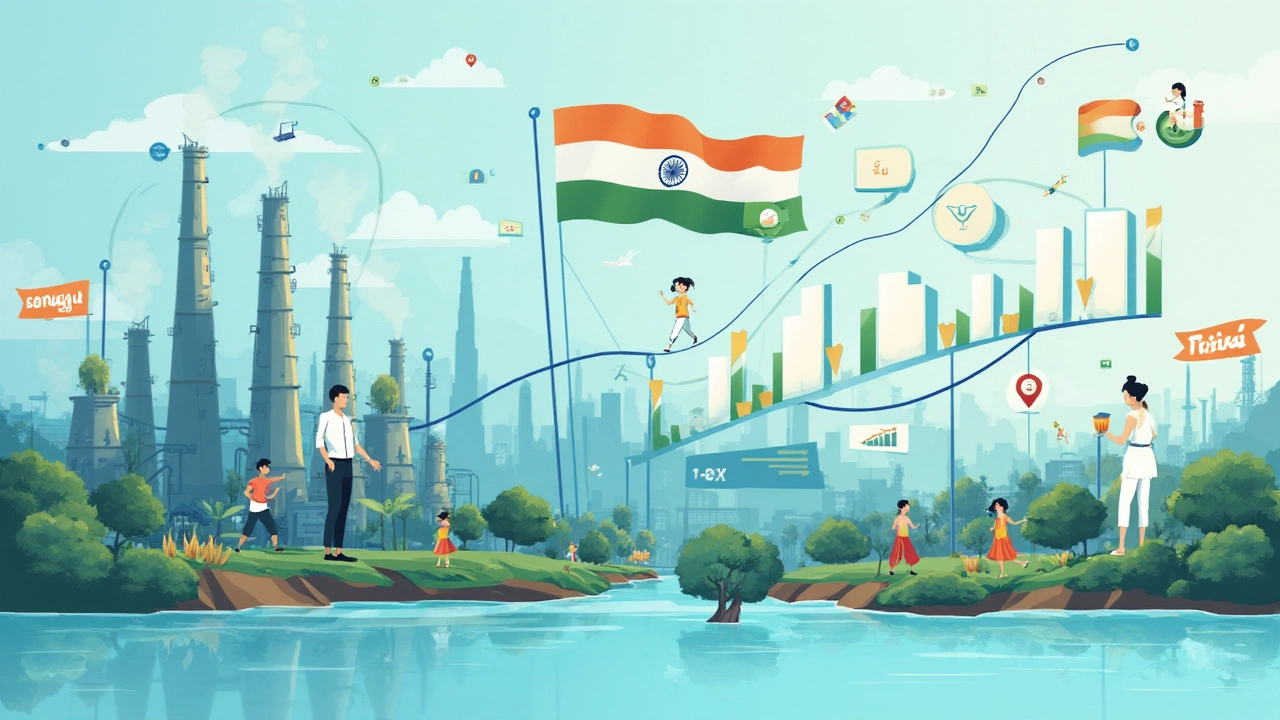
If you asked three different people which country rules the chemical industry, you’d probably get three different answers. But here’s the shocker: China grabs the top spot by a mile. In 2024, China controlled over 40% of the global chemical market, which means almost half of the world’s chemicals come from one country. That’s more than any country in history.
But the story doesn’t stop at who’s making the most. It’s about who’s creating the highest value, who’s leading with innovation, and who’s reshaping global trade. Countries like the US and Germany have been heavyweights for decades, but the gap has narrowed fast. India, meanwhile, is doing more than just catching up—the country is set to jump into the top three by the end of the decade if growth keeps up.
Why does any of this matter if you buy or work with chemicals? Buying from a country that’s on top in the industry means better access, reliable quality, and usually, fair prices. But things can flip quickly, so it pays to know who’s holding the cards right now.
- Who’s on Top: The World’s Biggest Chemical Producer
- Chemical Powerhouses: USA, China, and Germany
- How India Stacks Up in the Chemical Race
- What Makes a Country the Leader?
- Tips for Working With Chemical Manufacturers
Who’s on Top: The World’s Biggest Chemical Producer
If you look at straight numbers, China sweeps the board. Official figures say that in 2024, China pumped out chemicals worth more than $1.9 trillion, dwarfing every other country. That’s not just a slight lead—it means China makes almost as many chemicals as the next three countries put together.
What’s behind China’s dominance? Really, it comes down to a mix of aggressive investment, government support, and a gigantic home market hungry for goods. Chinese cities are packed with everything from textile plants to high-tech electronics factories, all needing chemicals every day. So, Chinese companies don’t just export chemicals—they use them at home, which locks in steady growth.
The rest of the world hasn’t stood still, but the numbers show a clear gap. The United States, for several decades the global leader, now trails China by a wide margin. Germany holds on firmly as Europe’s biggest player, but its output is roughly a quarter of China’s total. To put it in perspective, the average chemical manufacturer in India or Brazil can’t match the scale or reach of the Chinese giants.
Here’s a quick snapshot of 2024 global output by country:
- Chemical industry leader: China — $1.9 trillion+ total output
- United States — about $600 billion
- Germany — about $220 billion
- India — close to $180 billion and rising fast
But having the crown isn’t just about size. China is pushing hard on research, clean energy chemicals, and more advanced products. This means even if other countries step up production, catching up on innovation is a whole other challenge.
Chemical Powerhouses: USA, China, and Germany
When you look at who moves the world’s chemicals, three countries stand out: China, the USA, and Germany. They don’t just ship out barrels of stuff—they set trends, push tech forward, and control global supply chains. Here’s where things really get interesting.
China isn’t just leading the pack; it’s on a whole different level. Back in 2024, China grabbed more than 40% of the global chemical market by value. They’ve got the world’s biggest chemical parks, deep government support, and the power to set prices. Lots of major companies—like Sinopec and ChemChina—call China home.
The United States keeps its edge with innovation. American firms like Dow, DuPont, and ExxonMobil are famous for their high-quality specialty chemicals and new tech. The US isn’t number one anymore by volume, but what they produce brings in huge profits and shapes entire industries. Plus, the US is a leader in petrochemicals, especially plastics and synthetic fibers.
Germany rounds out the big three with a laser focus on quality and engineering. Think of big names like BASF and Bayer. German companies specialize in high-value chemicals for cars, electronics, and pharmaceuticals. German chemical exports still top €120 billion every year—no small feat.
Check this out—here’s a quick chart of how the chemical industry looks by country in recent years:
| Country | 2024 Market Share (%) | Main Specialty Areas |
|---|---|---|
| China | 41 | Bulk chemicals, polymers, fertilizers |
| USA | 12 | Specialty chemicals, petrochemicals, plastics |
| Germany | 6 | Pharma chemicals, automotive, engineering plastics |
One thing that keeps these countries in the lead is their massive investment in research and huge local demand. Want to have predictable supply and the latest formulas? These are the flags to watch.

How India Stacks Up in the Chemical Race
India is way past the days of trying to catch up in the chemical industry. Today, it's one of the world’s largest chemical producers and exporters. As of 2024, India ranked sixth globally by market size, with chemical sales crossing $215 billion. That’s not small change—India’s chemical sector is about 7% of its entire GDP, and it keeps growing at more than 9% a year, way ahead of the global average of 3-4%.
What really stands out is the range India covers. It’s big in bulk chemicals, petrochemicals, specialty chemicals, and agrochemicals. If you’ve ever bought Indian pharmaceuticals or fertilizers, you’ve used these chemicals—this stuff shows up in everything from your medicine cabinet to your dinner plate.
Here’s how India’s numbers look up against the bigger global players:
| Country | 2024 Sales (USD billion) | Global Market Share (%) |
|---|---|---|
| China | 1750 | 41 |
| United States | 498 | 12 |
| Germany | 213 | 5 |
| India | 215 | 5 |
Indian chemical exports have taken a jump, too—now over $50 billion a year. Major export markets? The US, China, Brazil, and Europe. Some Indian chemical companies, like Reliance Industries and UPL, are now global brands and compete neck and neck with the giants from Europe and the US.
Why is India climbing so fast? There are a few reasons:
- The country has a massive domestic market, so it’s not just about exports.
- Lower costs for raw materials and labor keep production competitive.
- Investment in research and sharp government policies—like the Production-Linked Incentive (PLI) scheme—keep the industry moving.
- Growing demand for specialty chemicals from pharmaceuticals, agriculture, and emerging tech makes India stand out.
If you work with chemicals, it’s worth knowing that India is becoming a go-to for reliable supply, especially in specialty segments where China used to dominate. If this growth keeps up, it wouldn’t be crazy to see India break into the top three in the next few years.
What Makes a Country the Leader?
It’s tempting to think being number one is just about size, but the chemical industry is way more complicated than whoever makes the most barrels or sells the most tonnage. The real answer? It’s a mix of production, innovation, strong local demand, global exports, and reliability. China stands out not just because of its sheer volume, but also because it’s built a giant, ironclad supply chain and keeps investing in new technology.
Here’s what usually puts a country ahead:
- Chemical industry output: Countries that top the charts like China and the U.S. rack up billions in annual chemical sales.
- R&D spending: The U.S. alone invested around $10 billion in chemical-related research in 2023. New tech means better products and lower costs.
- Export strength: Germany sells nearly 60% of its chemicals to other countries, making its products well known.
- Supply chain control: Countries with easy access to raw materials and top-notch ports make manufacturing faster and cheaper.
- Regulations and safety: Places with tight rules usually get more trust from buyers looking for quality and safety.
Check out this quick comparison of the heavy hitters from last year:
| Country | Market Share (%) | Annual Output (USD Billion) | Top Strength |
|---|---|---|---|
| China | 41 | 1,600 | Mass production, fast scaling |
| United States | 13 | 500 | Innovation, specialty chemicals |
| Germany | 6 | 230 | Exports, high-quality manufacturing |
| India | 4 | 150 | Low costs, strong pharma sector |
If you’re eyeing suppliers or want to understand the market, don’t just look at numbers. A true leader in chemicals is also the country investing in sustainability, building safety nets for cheaper supply disruptions, and thinking five years ahead, not just five months.

Tips for Working With Chemical Manufacturers
When it comes to dealing with chemical manufacturers, small details can make a huge difference. Especially if you’re sourcing from heavy hitters like China, the US, Germany, or even emerging leaders like India. Here’s what you really need to watch out for:
- Chemical industry regulations are strict. Always double-check if your supplier meets local and international standards like REACH (Europe) or TSCA (USA). India’s top manufacturers, for example, are getting certified with ISO and taking compliance much more seriously now.
- Ask for third-party lab results and material safety data sheets (MSDS) before even thinking about placing a big order. If a supplier stalls or dodges, that’s a red flag.
- Don’t underestimate logistics. Chemicals aren't like widgets—they’re regulated, often classified as hazardous, and require extra shipping paperwork. Work with a supplier who has experience with international shipping if you’re exporting.
- Negotiate price, but remember high-quality chemicals often cost a little more. If someone is selling far below the market rate, question why. Often, you’ll find quality is what’s being cut.
- Build a relationship with account managers or sales reps. When things go sideways—like a shipment gets stuck at port—it helps to have someone on the inside who can speed things up.
To see what actually matters, check out where the world’s key chemical exporters stand today:
| Country | 2024 Chemical Exports (USD Billion) | Main Exported Chemicals |
|---|---|---|
| China | ~430 | Basic chemicals, fertilizers, plastics |
| USA | ~190 | Specialty chemicals, polymers |
| Germany | ~150 | Pharmaceuticals, fine chemicals |
| India | ~70 | Dyes, agrochemicals, APIs |
If you’re new, start with a small order. Some Indian companies let you do trial orders at a lower cost to test both quality and communication. And always get your contracts in writing—this means product specs, payment schedule, delivery timelines, and quality guarantees. Trust gets built with real actions, not just good sales pitches.